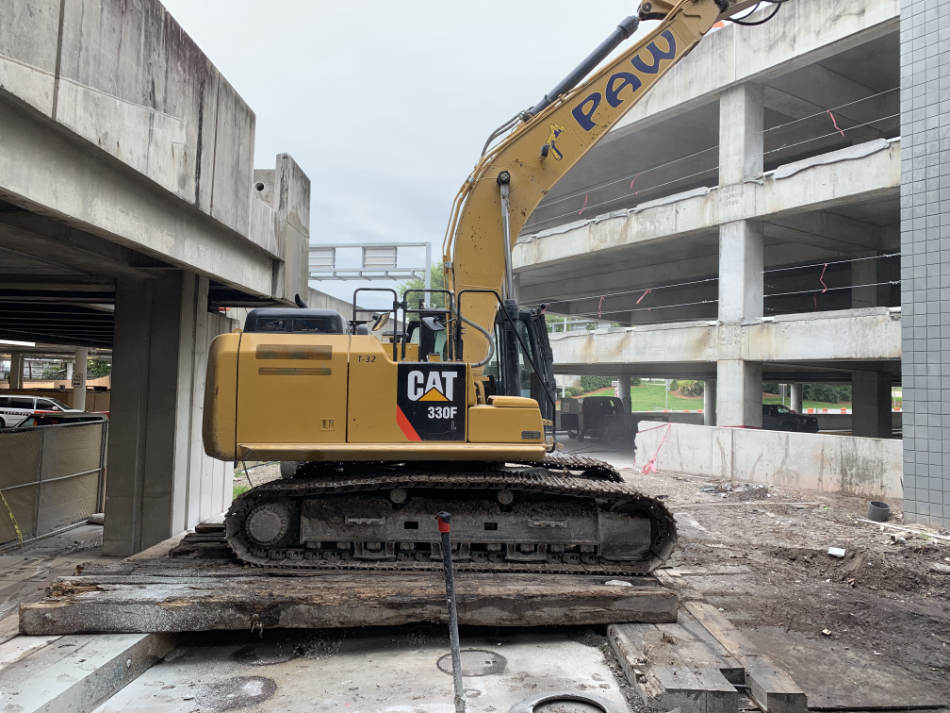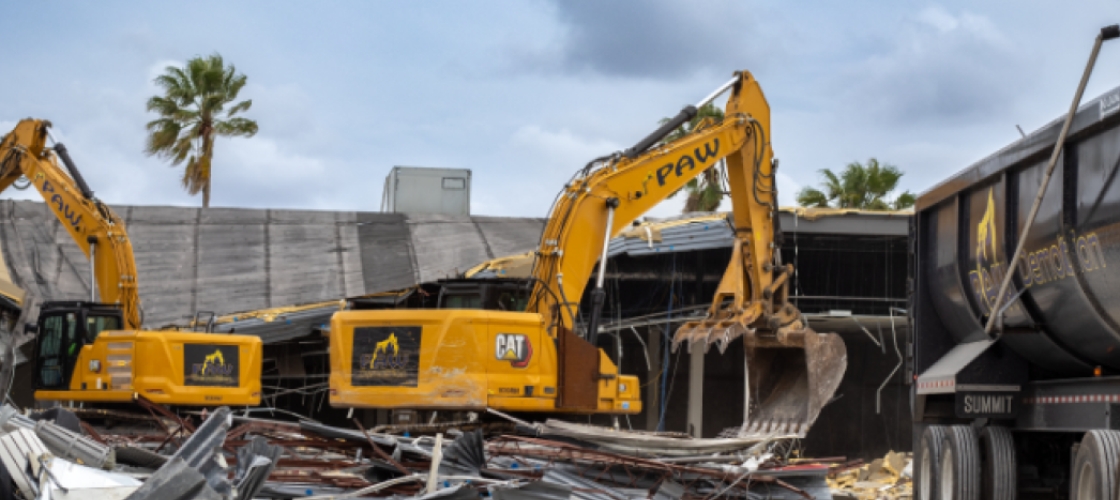Quick Answer:
When a building is demolished, debris is sorted to recover reusable materials. Concrete is crushed for new construction, metals are recycled, and wood is mulched.
Materials that cannot be reused are taken to a municipal or construction landfill, reducing landfill waste and conserving resources.
Demolition debris is typically sorted for recycling, which can include crushing concrete for new construction, salvaging metals, and mulching wood for reuse. Materials that cannot be recycled are sent to a landfill, either a municipal solid waste landfill or a specialized construction and demolition (C&D) landfill.
Recycling helps reduce the amount of waste in landfills and conserves natural resources.
Step-by-Step: What Happens After Demolition
-
Debris is separated on-site by material type.
-
Concrete, metal, and wood are sent to local recyclers.
-
Hazardous materials are isolated and handled safely.
-
Remaining debris is transported to approved landfills.
Micro Q&A
Q: What is the first step after a building is demolished?
A: Crews sort materials immediately to separate recyclables from landfill waste.
Q: Why does this process matter?
A: It reduces landfill use, lowers costs, and conserves valuable natural resources.
How Is Demolition Debris Recycled in Pasco County?
In Pasco County, demolition contractors follow strict guidelines for waste separation and recycling. The goal is to keep as much material as possible out of landfills. From Hudson to Zephyrhills, licensed demolition professionals like PAW Demolition help manage the process responsibly.
-
Concrete and asphalt are crushed and reused as base material for new roads and buildings.
-
Steel and rebar are separated using magnets and sent to metal recycling facilities.
-
Wood and vegetation are ground into mulch or biomass fuel.
-
Brick, tile, and masonry are reprocessed into fill or aggregate.
| Material | Recycle Action | Common End Use | Diversion Potential | Typical Facility Type | Notes and Local Links |
|---|---|---|---|---|---|
| Concrete | Crushed and screened | Base for roads and foundations | 95–100% | C&D recycler or quarry | Common on bridge and highway jobs |
| Asphalt | Milled and blended | Recycled asphalt pavement | 80–100% | Hot-mix plant or recycler | Hudson highway demo |
| Steel and rebar | Magnetic separation | New steel products | 98–100% | Scrap metal recycler | Used on industrial demolition projects |
| Aluminum and copper | Sorted and baled | Sheet, wire, castings | 90–100% | Scrap metal recycler | Recovered from commercial projects |
| Clean wood | Ground into mulch | Mulch and biomass fuel | 70–95% | C&D recycler | Common in residential demolition |
| Mixed or painted wood | Sorted, then ground or landfilled | Mulch where allowable | 30–70% | C&D recycler or landfill | Check coatings before recycling |
| Brick and block | Crushed as aggregate | Fill or base material | 70–95% | C&D recycler | See masonry jobs |
| Drywall gypsum | Separated and processed | Soil amendment or new board | 50–75% | Specialty recycler | Keep clean and dry to recycle |
| Roof shingles | Ground and screened | Hot-mix asphalt additive | 30–60% | Shingle recycler | Check local acceptance rules |
| Soil and rock | Screened and reused | Site grading and fill | 80–100% | Borrow pit or recycler | Test if contamination is suspected |
| Glass | Crushed into cullet | Aggregate or new glass | 30–70% | Materials recovery facility | Best when separated by type |
| Plastics and film | Sorted by resin type | Lumber or reprocessed resin | 10–40% | MRF or specialty recycler | Markets vary by quality |
| Hazardous materials | Isolated and abated | Special disposal only | 0% | Licensed hazmat facility | Handled by PAW Demolition and certified partners |
| Diversion potential values are estimates. Actual results depend on site conditions, contamination, and local recycling markets in Pasco County. | |||||
Micro Q&A
Q: How much of a demolition site’s debris can be recycled?
A: Up to 90 percent can be recycled with proper sorting.
Q: Who oversees recycling efforts in Pasco County?
A: The Pasco County Solid Waste Division and Florida Department of Environmental Protection (DEP) regulate the process.
Where Does Demolition Debris Go If It Can’t Be Recycled?
Not all materials can be reused. Items such as insulation, plastics, or contaminated soil are sent to approved landfills. Pasco County uses both municipal solid waste landfills and C&D landfills that are designed for heavier, inert materials.
Micro Q&A
Q: What is a C&D landfill?
A: It is a landfill that accepts materials like concrete, drywall, and roofing that are not suitable for regular trash disposal.
Q: How are Pasco County landfills kept safe?
A: They are engineered with liners and leachate systems to protect groundwater and the environment.
Why Recycling Demolition Materials Matters for Pasco County
Recycling saves natural resources and reduces carbon emissions. According to the Florida DEP, proper recycling can divert up to 75 percent of waste from landfills. Reusing aggregates and metals also reduces the need for new mining and manufacturing, cutting both energy use and costs.
Micro Q&A
Q: What are the community benefits of demolition recycling?
A: Cleaner neighborhoods, less landfill waste, and support for local green construction initiatives.
Q: Does recycling lower project costs?
A: Yes, because reusable materials reduce hauling and disposal fees.
Choosing the Right Demolition Contractor in Pasco County
Working with a professional, environmentally focused company ensures compliance with local and state regulations. PAW Demolition is a trusted local provider offering residential, commercial, and industrial demolition throughout Pasco County and surrounding areas.
Local demolition services include:

Fast, reliable demolition services from licensed pros with decades of field experience.
Micro Q&A
Q: Why choose a licensed contractor for demolition?
A: They manage recycling properly, follow safety rules, and ensure materials go to approved facilities.
Q: Does PAW Demolition handle both small and large projects?
A: Yes, from single homes to large industrial and highway demolitions.
FAQ
1. What happens to concrete after demolition?
It is crushed and reused as aggregate for new roads or foundations.
2. Can wood from demolition be recycled?
Yes. Clean wood is ground into mulch or biomass fuel.
3. How are metals separated from debris?
Magnets and manual sorting help isolate recyclable metals like steel and copper.
4. Are demolition materials hazardous?
Some materials such as asbestos or lead paint require special handling and disposal.
5. Who regulates demolition waste in Pasco County?
The Florida Department of Environmental Protection and local authorities manage debris disposal and recycling.
People Also Ask
What’s the difference between C&D and household waste?
C&D waste includes heavy materials like concrete and brick, while household waste includes everyday trash.
How much does demolition debris disposal cost in Pasco County?
Costs depend on project size, material type, and distance to recycling or landfill sites.
Can I recycle demolition debris myself?
It is best to hire a licensed contractor to handle sorting and transport safely.
What is the most recycled demolition material?
Concrete is the most commonly recycled due to its large volume and reuse potential.

